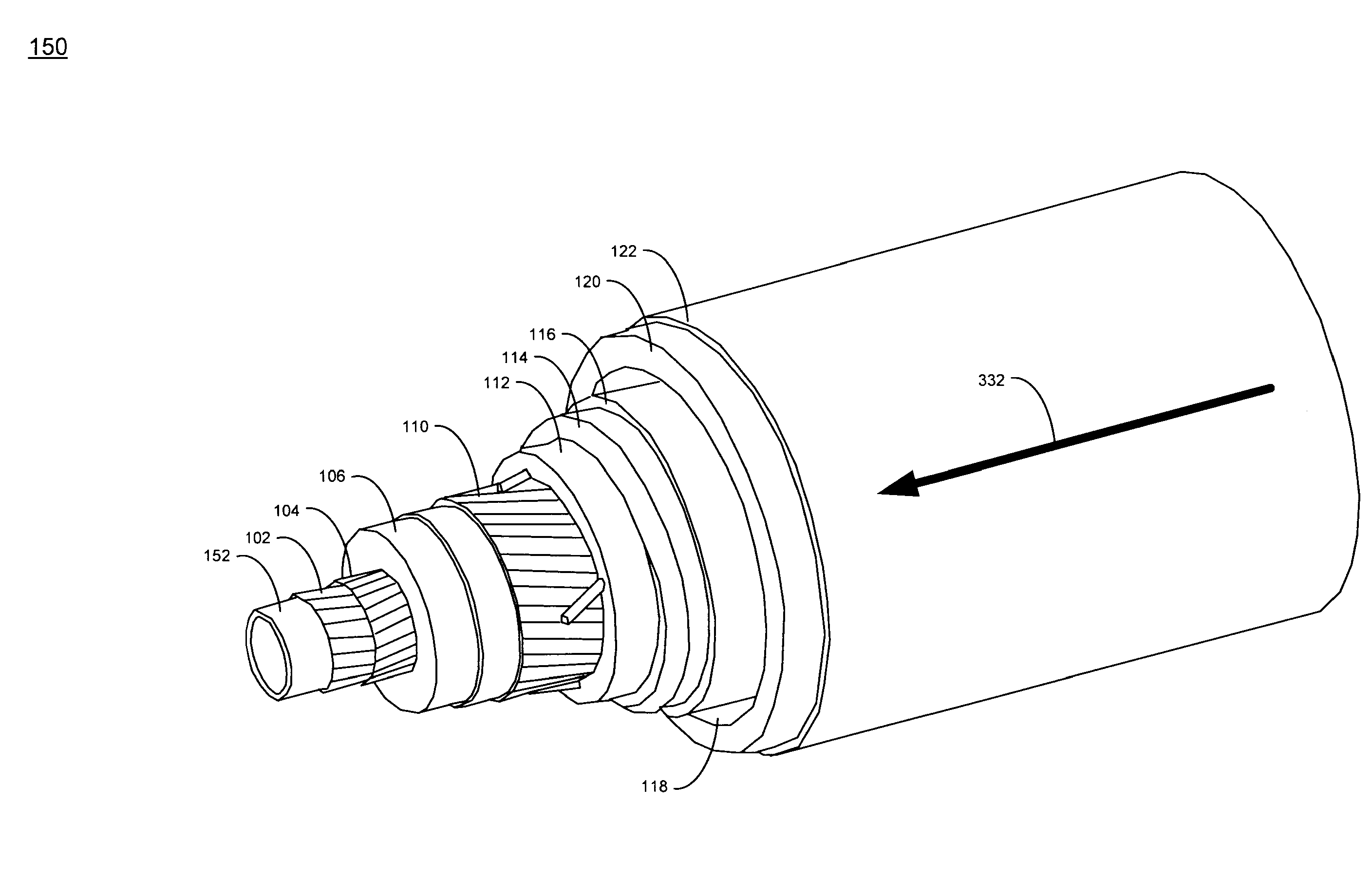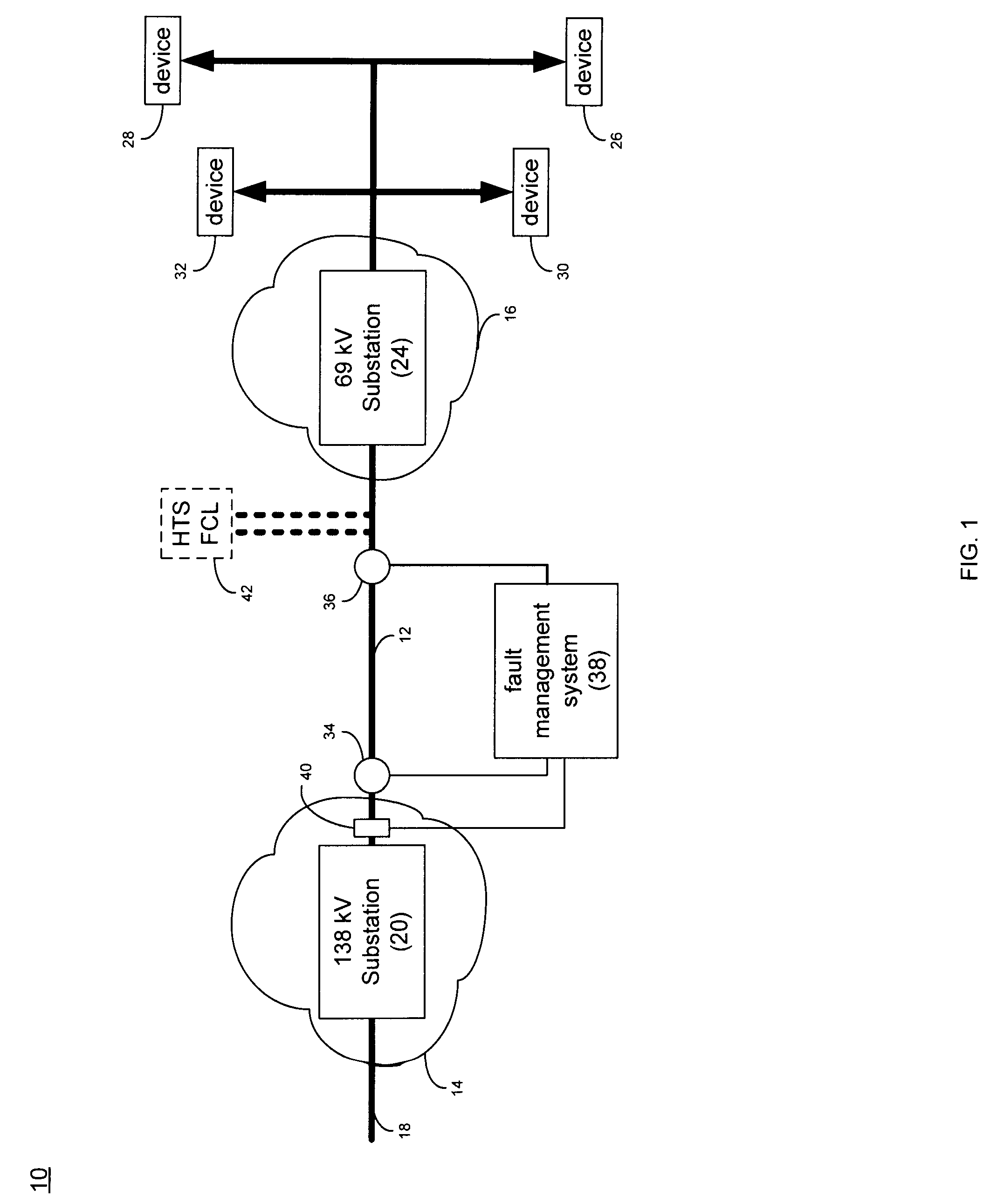HTS Wire
- Summary
- Abstract
- Description
- Claims
- Application Information
AI Technical Summary
Benefits of technology
Problems solved by technology
Method used
Image
Examples
Embodiment Construction
Overview
[0042]Referring toFIG. 1, a portion of a utility power grid 10 may include a high temperature superconductor (HTS) cable 12. HTS cable 12 may be hundreds or thousands of meters in length and may provide a relatively high current / low resistance electrical path for the delivery of electrical power from generation stations (not shown) or imported from remote utilities (not shown).
[0043]The cross-sectional area of HTS cable 12 may only be a fraction of the cross-sectional area of a conventional copper core cable and may be capable of carrying the same amount of electrical current. As discussed above, within the same cross-sectional area, an HTS cable may provide three to five times the current-carrying capacity of a conventional AC cable; and up to ten times the current-carrying capacity of a conventional DC cable. As HTS technology matures, these ratios may increase.
[0044]As will be discussed below in greater detail, HTS cable 12 includes HTS wire, which may be capable of handl...
PUM
 Login to View More
Login to View More Abstract
Description
Claims
Application Information
 Login to View More
Login to View More - R&D
- Intellectual Property
- Life Sciences
- Materials
- Tech Scout
- Unparalleled Data Quality
- Higher Quality Content
- 60% Fewer Hallucinations
Browse by: Latest US Patents, China's latest patents, Technical Efficacy Thesaurus, Application Domain, Technology Topic, Popular Technical Reports.
© 2025 PatSnap. All rights reserved.Legal|Privacy policy|Modern Slavery Act Transparency Statement|Sitemap|About US| Contact US: help@patsnap.com



